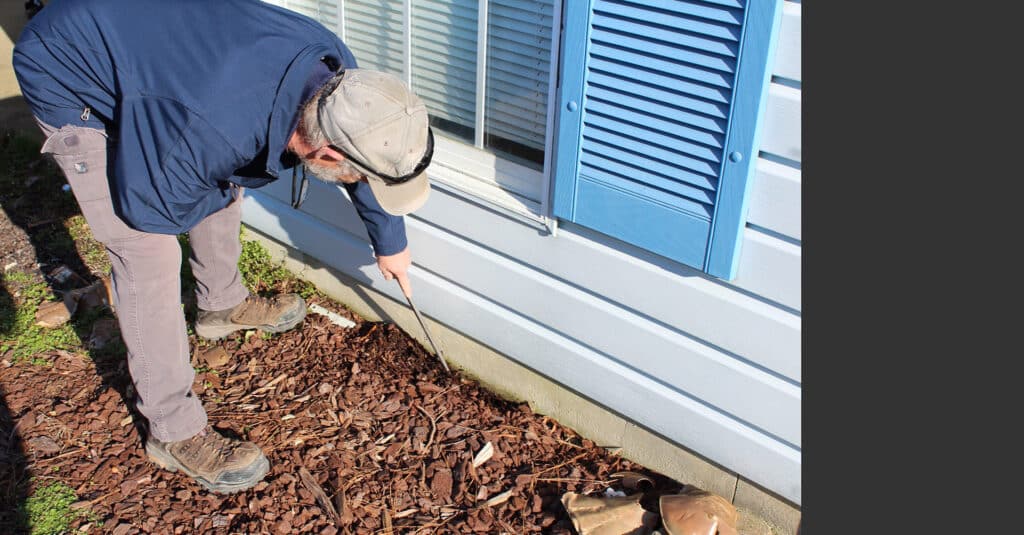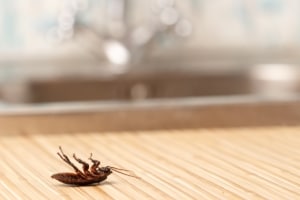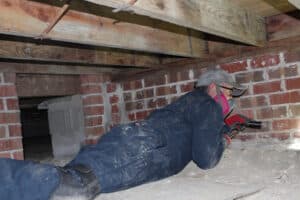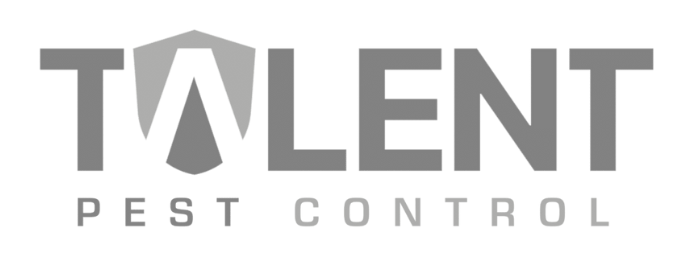
Termites are among the most damaging pests a homeowner can face. These silent invaders can remain hidden for years, quietly eating away at the structure of your home. By the time visible damage appears, the infestation is often severe, leading to costly repairs or, in extreme cases, rendering a home unlivable.
Understanding the warning signs of a termite infestation is crucial for early detection and treatment. This guide will cover the major indicators of a termite problem, explain what each sign means, and provide clear steps on what to do if you suspect termites in your home.

Unlike many household pests, termites do not just contaminate food or create a nuisance; they actively destroy the structure of homes. Their ability to consume wood from the inside out makes them difficult to detect until they have already caused significant damage.
Given the risks, knowing the warning signs of termites and responding quickly is essential for protecting your investment.
Swarming termites, also called alates, are reproductive members of the colony that leave in search of a new place to establish themselves. These termites are often mistaken for flying ants, but their discarded wings are a clear indication of termite activity.
Finding discarded termite wings means that termites have successfully mated and are looking for a new home to start a colony. Unlike ants, termites do not forage individually; they establish large underground or hidden colonies that expand rapidly. A single mating pair can create a colony that grows into thousands or even millions of termites over time.
If you notice these wings in or around your home, it is highly likely that termites are already inside or nearby. Without immediate treatment, they will continue multiplying and begin consuming the wooden structure of your home.
If you find small, translucent wings scattered near windows or doorways, it is a sign that termites are establishing a colony. Since termites burrow quickly and go undetected for long periods, early action is crucial to prevent major structural damage.

Mud tubes are thin, straw-like tunnels that termites build to protect themselves from open air and predators as they move between their underground nests and food sources.
Mud tubes indicate an active termite infestation, meaning termites are moving between their underground colony and your home. These tubes provide termites with a moist environment that allows them to travel undisturbed and expand their colony.
If left untreated, mud tubes will continue to spread across walls and foundations, giving termites greater access to your home’s wooden structure. Over time, this leads to significant structural weakening, making walls unstable and floors sagging under weight.
A homeowner who ignores mud tubes may eventually see cracks appearing in walls, difficulty opening doors and windows due to shifting foundations, and even roof damage from termite tunnels reaching upward.
If you see small brown tunnels running along your walls or foundation, termites are actively invading your home. Breaking a mud tube open and finding live termites inside confirms an ongoing infestation that requires immediate pest control intervention.

Since termites eat wood from the inside out, they leave behind only a thin outer shell that may look normal from the outside but is completely hollow inside.
Hollow or weakened wood is a major structural concern. Over time, termite damage can lead to support beams, floor joists, and ceilings losing their strength, causing walls to shift or floors to become uneven.
For example, a wooden staircase may suddenly feel wobbly or unsafe because termites have hollowed out the steps and support structures. Similarly, a wooden deck may collapse under weight if termites have eaten away at its foundation.
Ignoring hollow wood means the infestation is already advanced, and immediate professional treatment is necessary to stop further destruction.
If parts of your home sound hollow when tapped or appear structurally weak, termites may already be inside. Professional inspection and treatment are necessary to prevent further damage and ensure your home’s stability.
Unlike subterranean termites, which travel underground, drywood termites live inside wood and leave behind tiny wood-colored droppings known as frass.
Frass is a strong indicator that termites are already inside your home, actively consuming wooden structures. Unlike other pests that leave visible damage on the surface, drywood termites eat from the inside out, meaning the affected area may look completely normal until it crumbles apart.
For example, if you notice tiny piles of frass near a wooden dresser or bookshelf, the termites are likely inside the furniture itself. Over time, the furniture may collapse or become too damaged to repair.
If frass is found inside walls or ceilings, the infestation is far more severe, as termites have likely been feeding inside for an extended period.
Finding tiny wood-colored pellets around your home means drywood termites are present and feeding. Their presence inside furniture or walls requires immediate professional pest control before the infestation spreads further.
If you notice any of the signs listed above, take immediate action to prevent further damage.
Termites are a homeowner’s worst nightmare due to their ability to cause severe, costly damage before they are detected. By recognizing the early warning signs and acting quickly, you can protect your home from irreversible harm.
If you suspect termites in your home, contact a professional pest control service immediately to eliminate the infestation and safeguard your property.
Your home is one of your most valuable investments, and protecting it from pests like termites, rodents, and other invasive insects is essential to maintaining its safety and structural integrity. If you’ve noticed any signs of termites, from mud tubes to hollow-sounding wood, don’t wait until the damage becomes severe. Early detection and professional treatment can save you thousands of dollars in repairs and prevent a full-blown infestation.
At Talent Termite, we provide comprehensive pest control services in Virginia Beach and the surrounding areas (pest control in Norfolk, Chesapeake, Williamsburg, Newport News, and more). Our team of experts conducts thorough inspections, identifies potential pest threats, and implements targeted treatments to eliminate infestations quickly and effectively.
Nothing's more valuable than your home and the people in it. Call today to book a service and ensure your home remains a safe space for your family by using our pest control services in Hampton Roads.
